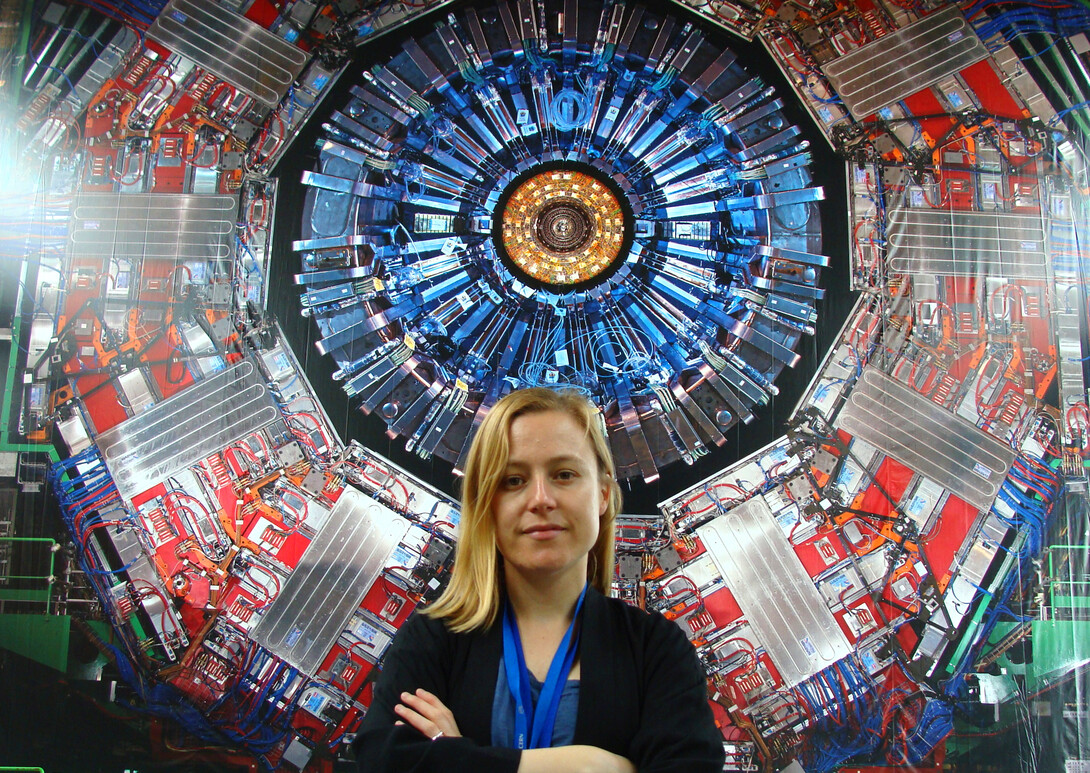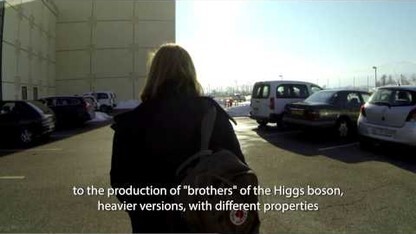
A University of Nebraska-Lincoln postdoctoral researcher is overseeing the first data-yielding collisions at the Large Hadron Collider since the reboot of the world’s largest particle accelerator in April.
Rebeca Gonzalez Suarez is a run field manager in Cessy, France, site of a massive particle detector known as the Compact Muon Solenoid. On June 3, she will help supervise the first stable collisions of protons at 13 trillion electron volts of energy. The LHC’s first run, which ended in early 2013 and preceded its two-year upgrade, operated at a peak of 7 trillion electron volts.
As a run field manager, Gonzalez Suarez has coordinated daily and weekly plans for conducting experiments that accelerate and smash particles together at nearly the speed of light.
Running the Compact Muon Solenoid is a 24/7 operation, she said, with five-person crews alternating shifts every eight hours. In her role, she aims to ensure continuity from one shift to the next, along with the integrity of experimental data and safety of the detectors that collect it.
Her specific duties have included providing advice to shift leaders, leading daily meetings of Compact Muon Solenoid experts, serving as a liaison for technical operators and offering status reports to superiors when issues or questions arise.
These responsibilities have required Gonzalez Suarez to remain on call throughout her two-week stint in the role, which rotates among scientists at the CERN laboratory that houses the 17-mile-long accelerator.
“It feels a bit overwhelming at the start,” said Gonzalez Suarez, who joined UNL in 2012. “There are many parameters to consider, from who has testing priorities on a particular day … to the level of supplies for the coffee machines. It is a challenge, but it is a great experience. It is very dynamic and provides a full picture of the running of the Compact Muon Solenoid experiment, which is really valuable to me.”
Joining the CMS experiment in 2006 has allowed Gonzalez Suarez to witness many recent milestones of particle physics, including the initial boot of the Large Hadron Collider in 2008 and confirmation of the long-theorized Higgs boson in 2012. She said she hopes to remain at the LHC “at least through the duration of its running life,” which could last well into the next decade.
That life should yield many more insights into the fundamental nature of the physical universe, said Gonzalez Suarez.
“A lot of things excite me about the start of the (second run),” she said. “It is time to go further, completing the Standard Model of particle physics and peeking beyond it. Higher energy means … unlocking areas of research never accessible before.
“Ahead of us lies a long period of collisions that could bring new discoveries. I am looking forward to seeing what is (waiting for) us out there.”
To learn more about what Gonzalez Suarez hopes to find, click here for a video interview from CERN. Her “Lonely Chairs” blog, which showcases the history and personality of the laboratory through the lens of its many seats, can be found here.
Gonzalez Suarez was also among those who offered a few words prior to the start of LHC operations on June 3. To watch the webcast that documented the event, click here.








